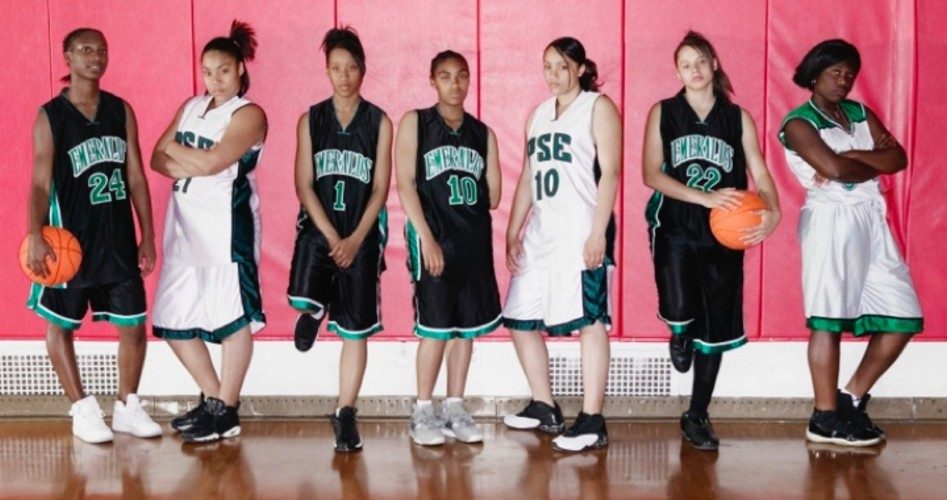
Imagine a fairly muscular, athletic young man, acting like a man and dressed as a man, tells you he identifies as a woman and asks you to sign a petition supporting his effort to play on his college’s women’s basketball team. Your response?
If you’re like 49 out of 50 students approached at the University of Maryland recently, you may sign and say “You go, (girl?)!”
And, no, according to Campus Reform’s Cabot Phillips, who masqueraded as the aspiring woman, he didn’t show just the eyebrow-raising responses. He says that he asked only 50 students for support, and 49 offered it (video below).
Phillips explained his motivation, writing, “I wanted to see just how far young people are willing to go to accommodate those in the transgender community, so I went to the University of Maryland posing as a student who identified as a woman but was unable to try out for the women’s basketball team because of my ‘assigned gender at birth.’ …Despite making no effort to exude femininity, it soon became apparent that students were more than willing to go along with the idea that I was a woman who had every right to play basketball with other women.”
Shockingly, only one student, a young man, withheld support, explaining that Phillips was in fact a man and that biological differences were significant. All the others were apparently willing to say a naked emperor was displaying sartorial splendor.
Yet saying and believing can be two different things. Phillips also points out that many students “seemed hesitant and disbelieving, yet offered words of encouragement and agreed to sign my petition anyway…. [T]hey so aptly illustrate the politically correct environment in which Americans — especially millennials — have been taught that they cannot express any opinion that might hurt someone else’s feelings. I firmly believe that many of the students who signed their name in support of my fictitious cause were simply hesitant to speak up in opposition for fear of being labeled a ‘bigot’ or ‘intolerant.’” Of course, that people will play along with a socially destructive delusion is a tribute to the power of social pressure. Having said this, it’s also delusive to believe that “equality dogma” and the “transgender” agenda haven’t infected hearts and minds.
While Phillips states that after Barack Obama’s government-school bathroom mandate, it’s only a “matter of time before the same demands are made for transgender athletes,” similar demands have already been made. Dr. Richard Raskind, the famous “transsexual” who adopted the name Renée Richards, was granted the right to compete in women’s tennis and won the 1979 35-and-over U.S. Open women’s tennis title at age 45. “Lana Lawless,” also a man claiming to be a woman, was allowed to participate in the Women’s World Long Drive Championship (golf) — and won the 2008 event at age 55. And because of a lawsuit Lawless filed against the Ladies Professional Golf Association, the tour had to scrap its “female at birth” rule in 2010. And these are just two examples.
Yet lamentably, examples of people defending such lunacy are even more numerous. For example, in 2009 there was the curious case of Caster Semenya, an 18-year-old South African runner who was dusting “her” female competition. Owing to not just “her” stellar performances, but also muscular physique, relatively deep voice, and masculine mannerisms, athletic officials ordered Semenya to undergo tests to ascertain sex status. It was ultimately proven that Semenya was a hermaphrodite — Semenya had external female genitalia but internal testes — a tragic revelation for the runner’s family. But tragic for the wider society is the reaction to the controversy by many observers. As I reported at the time:
For instance, consider “JimBob” posting under this Daily Mail piece, who said,
“Why is everyone talking about genetics? What about Caster’s own mind — if she believes within herself that she’s female, then she is.”
Echoing this sentiment here, “Green Is Good” wrote,
“SHE identifies HERself as a female. Done.”
Then, back to the Mail, “Livio” opined,
“This is a clear case of gender identity discrimination. What if she is a man who identifies himself as a woman?”
So here, again, we see wholesale denial of objective reality. And denial of objective reality leads to contempt for rules based in objective reality. For example, something is forgotten amidst all the “compassion” for the rare hermaphrodite or male athlete masquerading as a female one: What about their female competitors? Do they not deserve the level playing field of only competing against their own sex?
And “transgender” advocates contradict themselves. They sometimes point out that there’s a difference between “sex” and “gender,” with the former being a biological classification and “gender” being a person’s perception of what he is. Yet the reality is that sports are divided based on the sexual distinction, not any “gender” distinction. (This would be difficult to do, anyway, with activists now having defined more than 60 “genders.”) Nonetheless, “transgender” advocates will often turn around and claim that a person of one biological classification should be allowed to join a group defined by a different biological classification, even though — as they admit — he cannot change his biological classification to match that of the group.
And is this biological distinction significant? If not, then dissolve women’s sports leagues, teams, and tours and have everyone compete together. If so, however, then rules constraining members of one biological classification should be applied equally and not be negotiable based on “perception.”
Yet an issue here is perception — of reality. I used to work with children in an athletics environment. One day it emerged that one boy, of about 10 or 11, guessed that the women’s world record for the mile might be faster than the men’s. Another boy of approximately the same age expressed that there was a performance gap in sports between the sexes, but it was “very slight.”
Given that the mile record for 15-year-old boys is better than the women’s world record, this is striking dislocation from reality. And how it has arisen was illustrated well by a liberal young man I encountered who explained what he attributed his egalitarian view of the sexes to: watching the cartoon the Powerpuff Girls as a child (seriously).
It’s not surprising that entertainment is shaping thinking. If “The pen is mightier than the sword” and “A picture is worth a thousand words,” how many words is video worth? How much mightier is it still? And for the last several decades, American youth have been weaned on a steady diet of “girl power” fare, of masculinized female characters who may, be they 110 pounds soaking wet, toss around 220-pound male villains like rag dolls.
And this is no accident. The arts have long been used to shape thinking and instill a conception of virtue; The Boy Who Cried Wolf teaches about the consequences of lying, for example. And it has long been known that Hollywood is not just interested in entertainment, but social engineering. As for the portrayal of the sexes, the theory and aim underlying it were made clear long ago: Convince people that men and women are basically the same, and they will begin to instinctively treat them the same. “Voila!” no more “discrimination.”
My anecdotes evidence that this technique has certainly borne fruit. At least insofar as breaking down barriers the Left dislikes goes, people have increasingly begun to view and treat the sexes the “same.” Yet is this a good thing? Every civilization that has ever existed treated the sexes differently for a simple reason: Sex differences are real. To quote the quite liberal Bill Maher, “We have two standards because we have two sexes.”
And can people make wise policy decisions if this reality is obscured? Obviously, few will trouble over men in women’s sports if they believe the intersex performance gap is “very slight” to nonexistent. Of course, athletics is a relatively trivial matter. But what of more important issues?
Consider the recent proposal to make women subject to military conscription. Why should people oppose this if they’ve been raised to believe in the sameness of the sexes? Equality, right? The point here isn’t to say female conscription is a good or bad idea but is this: Can proper decisions be made by those lacking relevant information or, worse still, those inculcated with misinformation? As with a computer, garbage in, garbage out.
Of course, the sexes’ possessing different physical capacities isn’t the only reason not to draft women; it’s isn’t even the best reason. But just as an understanding of the different characteristics of dogs and horses yields a better grasp of their place in humanity’s world (you don’t have a Clydesdale guard your home), the sexes’ characteristic differences indicate their characteristic roles. And, of course, this is precisely why social engineers obscure those differences.
Whatever one’s beliefs here, it’s hard to make the case that healthy social structures and a lasting civilization can be built on lies. Good policy is rarely born of delusion.
And does not one delusion often lead to another? First we entertained the notion of the sexes’ sameness and the interchangeability of men and women, and now we indulge the idea that they’re so interchangeable that a man can change into a woman. Could there perhaps, just possibly, be a connection there?



